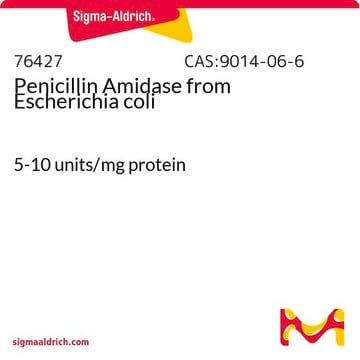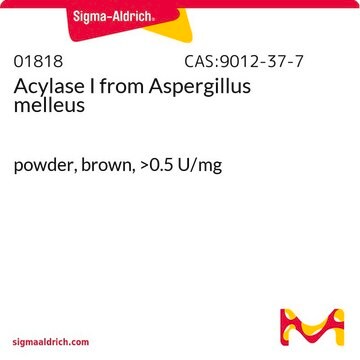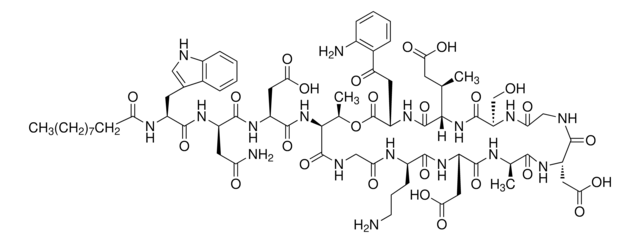A6691
Amidase from Pseudomonas aeruginosa
recombinant, expressed in E. coli, buffered aqueous glycerol solution, hydroxamate transferase ≥200 units/mg protein (biuret)
Sinonimo/i:
Acrylamide Amidohydrolase, Acylase
About This Item
Prodotti consigliati
Ricombinante
expressed in E. coli
Forma fisica
buffered aqueous glycerol solution
hydroxamate transferase activity
≥200 units/mg protein (biuret)
Concentrazione
14 mg/mL
N° accesso UniProt
Temperatura di conservazione
−20°C
Informazioni sul gene
Pseudomonas aeruginosa PAO1 ... PA4163(880181)
Cerchi prodotti simili? Visita Guida al confronto tra prodotti
Applicazioni
Azioni biochim/fisiol
Definizione di unità
Stato fisico
Avvertenze
Danger
Indicazioni di pericolo
Consigli di prudenza
Classi di pericolo
Resp. Sens. 1
Codice della classe di stoccaggio
12 - Non Combustible Liquids
Classe di pericolosità dell'acqua (WGK)
WGK 1
Punto d’infiammabilità (°F)
Not applicable
Punto d’infiammabilità (°C)
Not applicable
Dispositivi di protezione individuale
Eyeshields, Gloves, multi-purpose combination respirator cartridge (US)
Certificati d'analisi (COA)
Cerca il Certificati d'analisi (COA) digitando il numero di lotto/batch corrispondente. I numeri di lotto o di batch sono stampati sull'etichetta dei prodotti dopo la parola ‘Lotto’ o ‘Batch’.
Possiedi già questo prodotto?
I documenti relativi ai prodotti acquistati recentemente sono disponibili nell’Archivio dei documenti.
I clienti hanno visto anche
Il team dei nostri ricercatori vanta grande esperienza in tutte le aree della ricerca quali Life Science, scienza dei materiali, sintesi chimica, cromatografia, discipline analitiche, ecc..
Contatta l'Assistenza Tecnica.










